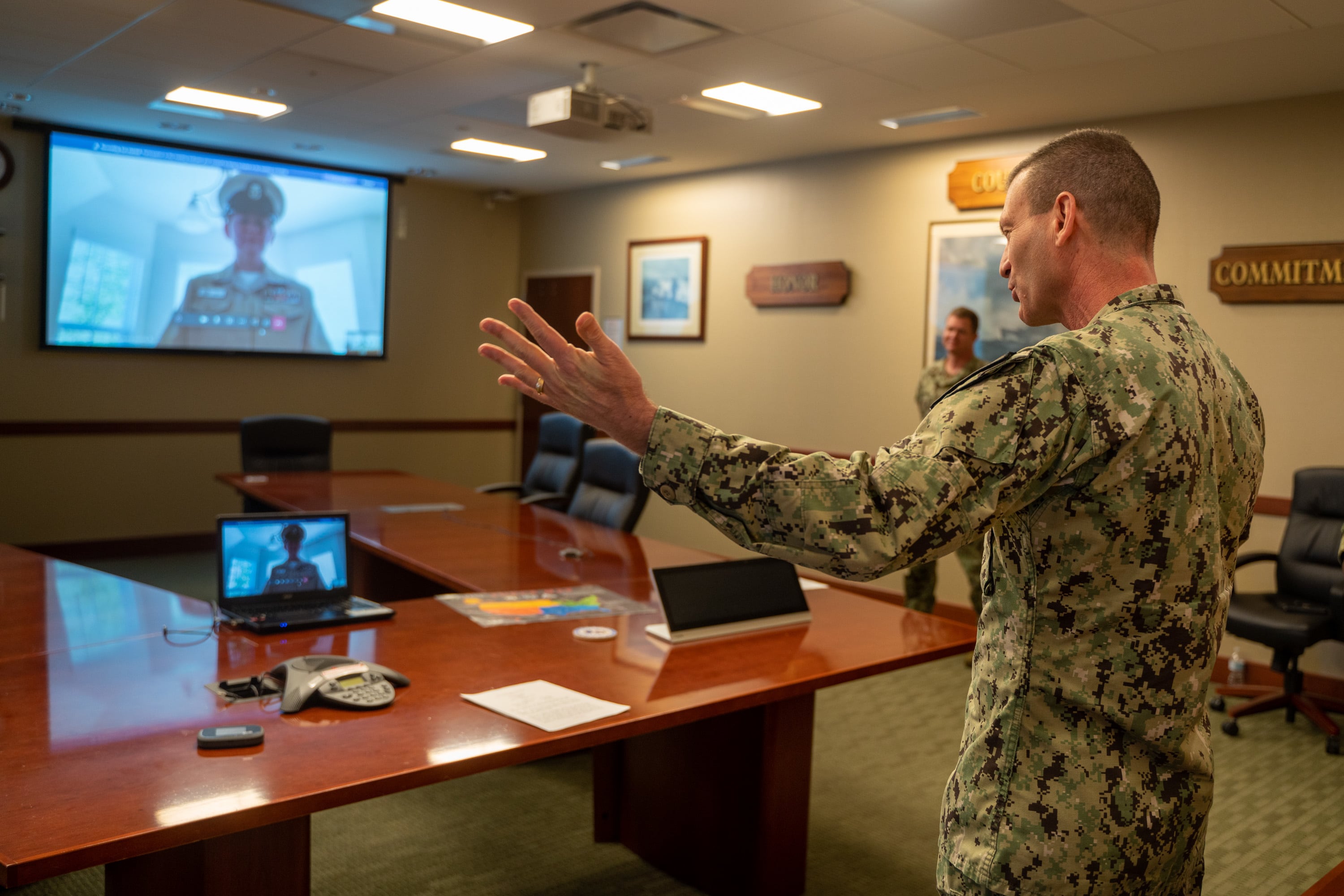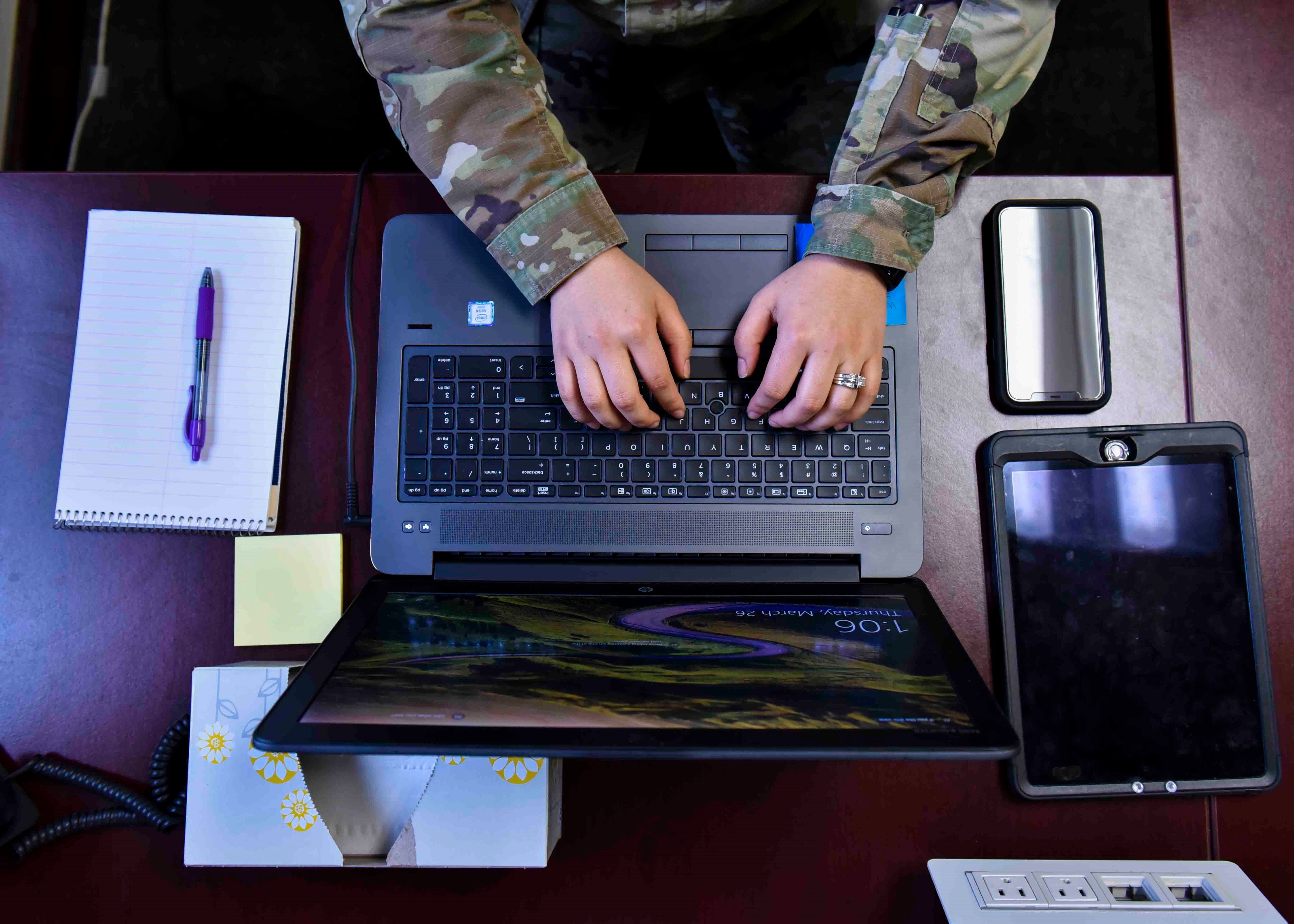The Department of Defense’s new “nuclear bunkers” could be a series of dining room tables across the world, linked together by internet companies and cellular data networks. After the 2019 novel coronavirus (COVID-19) exposed the U.S. national security community’s unpreparedness for the gambit of potential global threats to its traditional structures, the need to use telework to protect defense may change the DoD’s approach to remote collaboration. Still, it is unclear if the Department of Defense is poised to modernize the military workforce.
To put the situation in context, the military took eight weeks to fully stop troop movement because of COVID-19. This timeline began on Jan. 31, 2020, when U.S. Health and Human Services first elevated the virus to a national health emergency. On Feb. 25, DoD conducted discretionary preparations at the organizational level to insulate its personnel from the virus, 16 days before President Donald Trump declared the virus a national emergency on March 13. Finally, on March 24, the DoD implemented a departmentwide order to stop movement to protect the force (later canceled and replaced with new guidance on April 20).
This eight-week delay in force posturing is disconcerting, considering it should take less than a couple of weeks to deploy joint forces globally by air or sea. Senior leaders’ skepticism of a telework culture and a lack of confidence in military hardware, software and management procedures played a key role in inhibiting the DoD from rapidly transitioning to a geographically distributed force. Additionally, the near frantic deployment of off-the-shelf remote collaboration systems exacerbated existing national security cyber threats as an ad hoc information technology network, tethered to each employee’s unvetted commercial internet service provider, spawned across the federal government. Candidly, the DoD struggled to integrate, synchronize and direct telework as part of its crisis response, which illustrated its vulnerabilities in safeguarding key U.S. national security capabilities.
Doctrinally, DoD contingency planning requires leaders and staffs to maintain situational awareness to forecast hypothetical scenarios to uncover problems before a crisis arises, develop viable plans to quickly preempt them, and execute those plans through close, continuous interagency coordination and cooperation. Unfortunately, the military seemed unprepared by the chemical, biological, radioactive, nuclear or explosive (CBRNE) requirements associated with COVID-19, despite having responded to pandemics as national security threats in the past, including with HIV starting in 1981, severe acute respiratory syndrome (SARS) in 2003, and Ebola in 2014.
Notwithstanding several attempts since 2010, bureaucratic structures and guidelines indicative of Industrial Age management concepts limited teleworked to only 5 percent of the federal workforce before COVID-19. The lag in the federal government’s response indicates that agencies did not adequately incorporate telework into its continuity of operations plans as prescribed by the Telework Enhancement Act of 2010. Government leaders also seemed to disregard the requirement to “prepare for, respond to, and recover from biological threats,” specifically using “information-sharing and networking and coordinated response operations” to limit the impacts of bio-incidents, as outlined in the 2018 U.S. National Biodefense Strategy.
To reduce these vulnerabilities in the future, first, the DoD should issue unclassified, government-funded laptops to each employee and provide them with a suite of collaboration software for use on government and personal equipment. Looking beyond COVID-19, bases and installations normally restrict nonessential workers’ access during elevated force or health protection conditions. Providing portable computers for use in either in office or telework environments would reduce disruptions to service and support activities when garrison commanders limit admittance to facilities and mitigate several risks associated with returning to an office space during a CBRNE event.
RELATED

Second, establish, train and implement DoD telework protocols into routine workflows to set the conditions for interagency and multinational collaboration during crisis management. GitLab, a software company with teleworkers in 66 countries, identified organizational, technical and social onboarding as the three key dimensions for creating a successful remote workforce. The DoD possesses the educational and training institutions necessary to establish, enhance and teach across these dimensions to adequately balance remote and in-person work. However, the department should not settle for existing industry telework models due to the unique nature of classified and manual defense activities. Instead, the DoD should develop a hybrid “tele-physical” work culture that meets its national security responsibilities.
Third, refine DoD telework decision criteria and processes to allow personnel to quickly relocate. The Under Secretary of Defense for Personnel and Readiness, who develops and implements telework policy for the department, should use the Goldwater-Nichols Act of 1986 to delegate telework implementation to the service secretaries. This would facilitate better telework integration into civilian and uniformed personnel management prior to a crisis. This would minimize interruptions to unclassified service and support activities, reduce ambiguity, and promote decisive action when, not if, the DoD conducts departmentwide decentralized operations in the future.
Fortunately, the DoD is aligned with its doctrine in U.S. Joint Publication 3-0 “Joint Operation” and already adapting to the modern threat environment. It embraces that all levels of warfare “require agility and versatility of thought, plans, operations, and organizations” for the DoD to meet evolving national security challenges. Doctrine compels the military to develop the means, ways and ends to perform its national security functions. Telework is a way but, like precision air strike in Operation Desert Storm, will not replace the need for people to gather at the decisive point and risk their lives to defend the U.S., its allies and partners. However, as the DoD invests in the systems, people and culture of effective telework, it also minimizes the people placed in harm’s way and preserves national security capabilities.
U.S. Army Lt. Col. Eldridge R. Singleton is a 2020-2021 National Security Affairs Fellow at the Stanford University Hoover Institution. He has served for 22 years in infantry, special forces and foreign area officer assignments and will return to international relations duties supporting the Department of Defense this summer. The views expressed herein are those of the author and do not reflect the official policy or position of the U.S. Army, DoD or the U.S. government.








